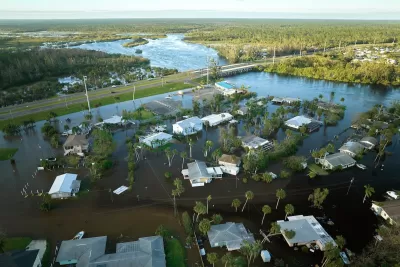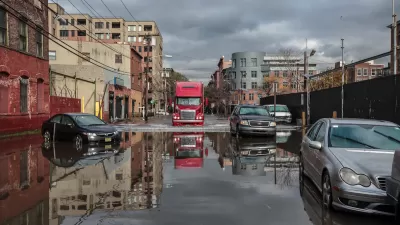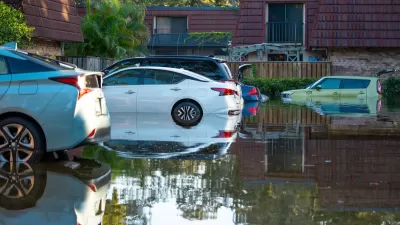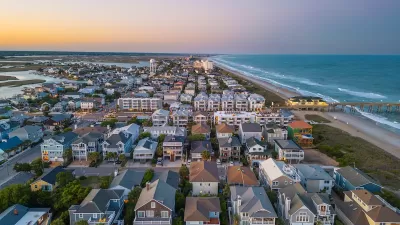People of color and lower-income residents tend to lose wealth despite the stated goals of federal assistance programs to restore communities impacted by disasters.

Research into the distribution of financial aid after climate disasters reveals that some of the nation’s most disadvantaged communities are often overlooked when it comes to disaster assistance resources, reports Amy Green for Inside Climate News.
“One 2018 study found that while white residents tend to gain affluence over time after a catastrophe, Blacks and other residents of color lose wealth. In counties where very little damage occurred between 1999 and 2013, researchers found that white residents gained an average of $26,000 in wealth but reaped nearly five times as much, about $126,000, in counties that suffered $10 billion in damage. By contrast, people of other races, who gained wealth in areas spared from significant damage, lost ground in hard-hit places. Black residents in damaged areas lost $27,000 in wealth, Latinos lost $29,000 and people of other races such as Asians lost $10,000.”
According to the same study, both public (FEMA) and private insurance programs are aimed at “restoring restoring property or wealth, an approach favoring those with more property and the ability to pay for insurance.” Lower-income residents impacted by climate disasters, meanwhile, suffer other related losses such as jobs and increased rents that assistance programs do not cover.
A 2020 report from the National Advisory Council recommended that FEMA create an “equity standard” to ensure its grants reach the communities that need them most. “ The document also suggested incorporating diversity, equity and inclusion into FEMA practices, recruiting an inclusive workforce and providing fair and equitable opportunities for professional advancement within the agency.” The agency is already incorporating some of these changes.
FULL STORY: After Disasters, Whites Gain Wealth, While People of Color Lose, Research Shows

Study: Maui’s Plan to Convert Vacation Rentals to Long-Term Housing Could Cause Nearly $1 Billion Economic Loss
The plan would reduce visitor accommodation by 25,% resulting in 1,900 jobs lost.

Alabama: Trump Terminates Settlements for Black Communities Harmed By Raw Sewage
Trump deemed the landmark civil rights agreement “illegal DEI and environmental justice policy.”

North Texas Transit Leaders Tout Benefits of TOD for Growing Region
At a summit focused on transit-oriented development, policymakers discussed how North Texas’ expanded light rail system can serve as a tool for economic growth.

Paris Bike Boom Leads to Steep Drop in Air Pollution
The French city’s air quality has improved dramatically in the past 20 years, coinciding with a growth in cycling.

Why Housing Costs More to Build in California Than in Texas
Hard costs like labor and materials combined with ‘soft’ costs such as permitting make building in the San Francisco Bay Area almost three times as costly as in Texas cities.

San Diego County Sees a Rise in Urban Coyotes
San Diego County experiences a rise in urban coyotes, as sightings become prevalent throughout its urban neighbourhoods and surrounding areas.
Urban Design for Planners 1: Software Tools
This six-course series explores essential urban design concepts using open source software and equips planners with the tools they need to participate fully in the urban design process.
Planning for Universal Design
Learn the tools for implementing Universal Design in planning regulations.
Smith Gee Studio
Alamo Area Metropolitan Planning Organization
City of Santa Clarita
Institute for Housing and Urban Development Studies (IHS)
City of Grandview
Harvard GSD Executive Education
Toledo-Lucas County Plan Commissions
Salt Lake City
NYU Wagner Graduate School of Public Service





























